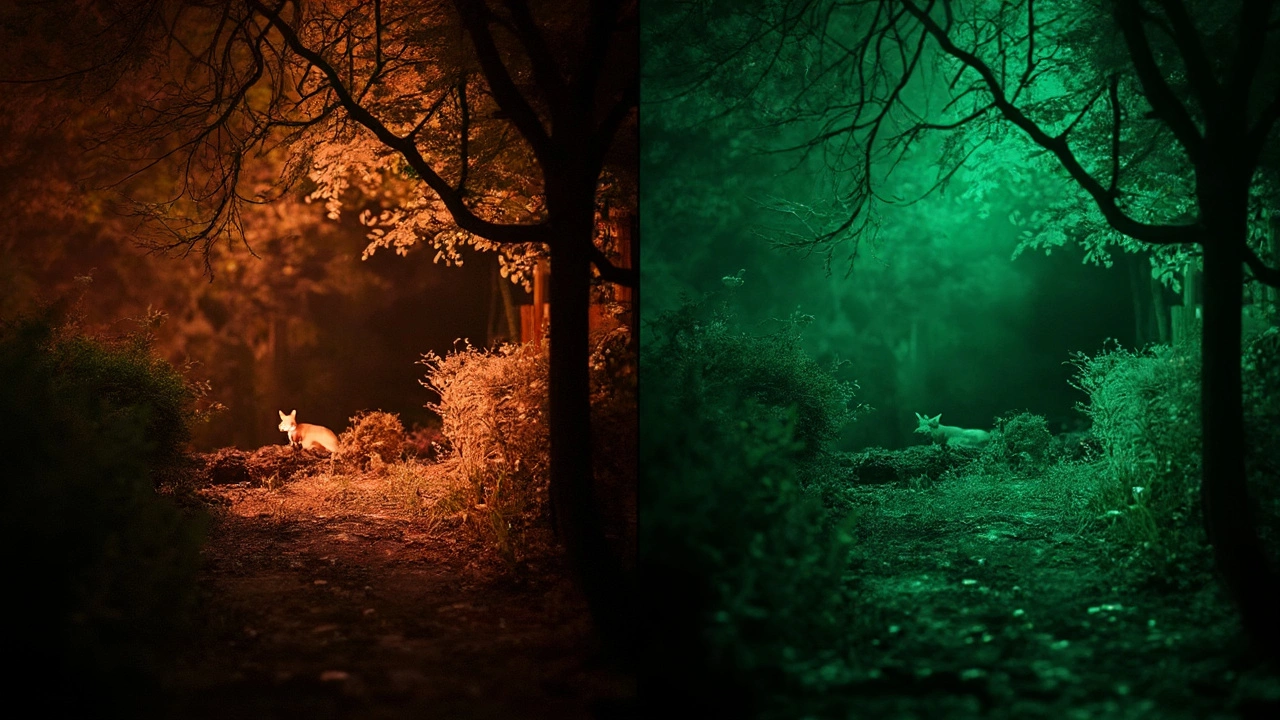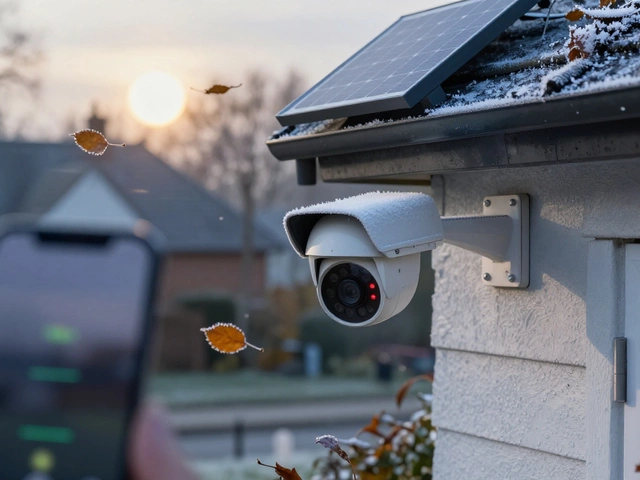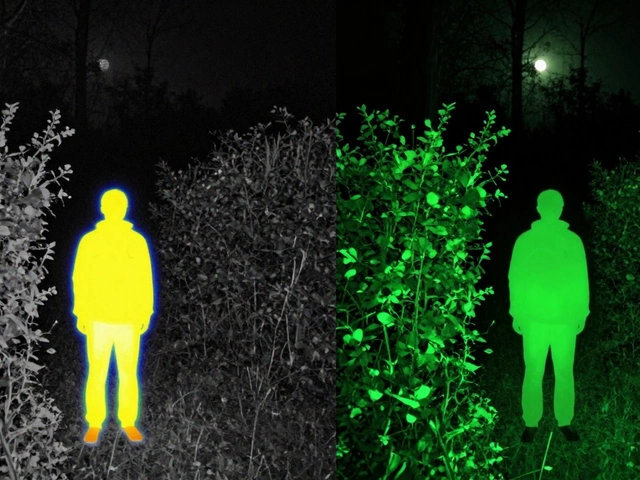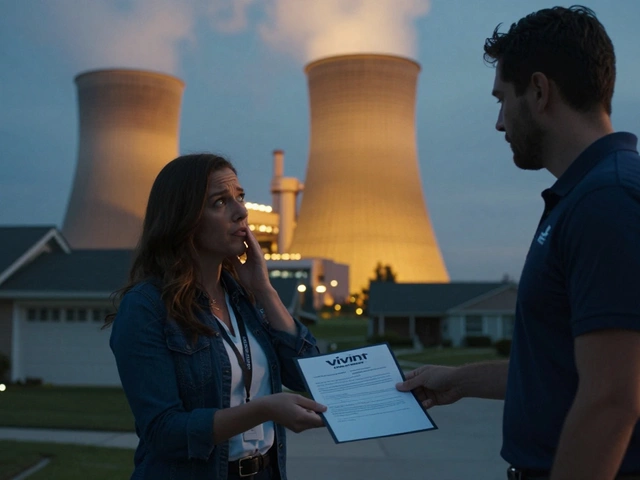Confused about whether an infrared camera is the same as a night vision camera? You’re not alone. Humans just aren’t built for seeing in the dark, but technology’s here to bail us out. From catching a raccoon raiding your trash to making sure your front porch is secure after midnight, picking the right camera can make all the difference.
So, what sets them apart? It isn’t just about snapping photos at night; it’s about how these cameras 'see' things that our eyes can’t. One type leans on invisible light you probably never think about, while the other amps up what little light is left. Let’s break it down without the usual tech jargon—just the facts, straight up.
- How Night Vision and Infrared Cameras Work
- Key Differences in Technology
- When to Use Each Camera
- Real-World Examples and Surprising Facts
- Tips for Choosing the Right Camera
How Night Vision and Infrared Cameras Work
Both infrared cameras and night vision cameras are built to help us see in the dark, but they use totally different tricks. The tech under the hood changes what the camera can actually show you after the sun goes down.
Night vision cameras pull off their magic by soaking up any tiny bit of light—like starlight or streetlights—and boosting it. Inside, there’s a special sensor called an image intensifier tube. This tube grabs the weak light, converts it into electrons, then ramps up that electron stream before turning it back into visible light on a screen. That’s how you get the classic green-tinted night vision look. No light at all? Traditional night vision won’t work unless you add an extra light source.
On the other hand, infrared cameras don’t care much about visible light. Instead, they zero in on heat—literally infrared radiation—all objects give off, including people, animals, and cars. Their sensor reads these heat signals and builds up an image. If you’ve seen a police helicopter chase on TV with glowing white or red people running around, that’s infrared imaging in action. These cameras can work in total darkness, through fog, and even light smoke because heat signatures poke through where normal light can’t.
Here’s a side-by-side comparison to clear things up:
| Camera Type | What It Detects | Needs Light? | Main Use |
|---|---|---|---|
| Night Vision | Visible light (boosted) | Yes – at least a little | Security, wildlife, personal gear |
| Infrared | Heat (infrared radiation) | No | Military, emergency, surveillance |
Bottom line—night vision cameras rely on boosting light, and infrared cameras rely on picking up heat. Understanding this difference is the first step to choosing the right tool for your nighttime needs.
Key Differences in Technology
Here's where the gears really start to turn. At first glance, infrared cameras and night vision cameras sound like the same thing, but they work in totally different ways. Let’s dig into how the tech actually works under the hood.
Night vision cameras basically take tiny bits of light that are still hanging around—even if you can’t see them—and they amplify it. This is called image intensification. These cameras suck up any available light from things like the moon, streetlights, or stars, then crank it way up so it looks like daylight on the screen. That’s why classic night vision is usually green: the tech picks up light better in that color range.
Infrared cameras, meanwhile, don’t need any regular light. They use special sensors to pick up infrared energy—heat—from people, animals, or objects. Everything gives off some level of heat, and an infrared camera translates that invisible energy into a picture. This is why infrared works in total darkness, fog, and even light rain, while night vision struggles in those conditions.
In short: night vision = boosts the light that’s already there, while infrared = spots the heat that things give off. Simple, but huge difference in how you’ll use them.
| Feature | Night Vision Camera | Infrared Camera |
|---|---|---|
| Works with regular light | Yes, needs some | No, works without it |
| Sees through total darkness | No | Yes |
| Shows heat signatures | No | Yes |
| Typical Image Color | Greenish | Black & White or Colored Heatmap |
So, if you want to spot something on a moonless night or find out where animals are hiding in the bushes, knowing this tech difference will help you pick the right camera.
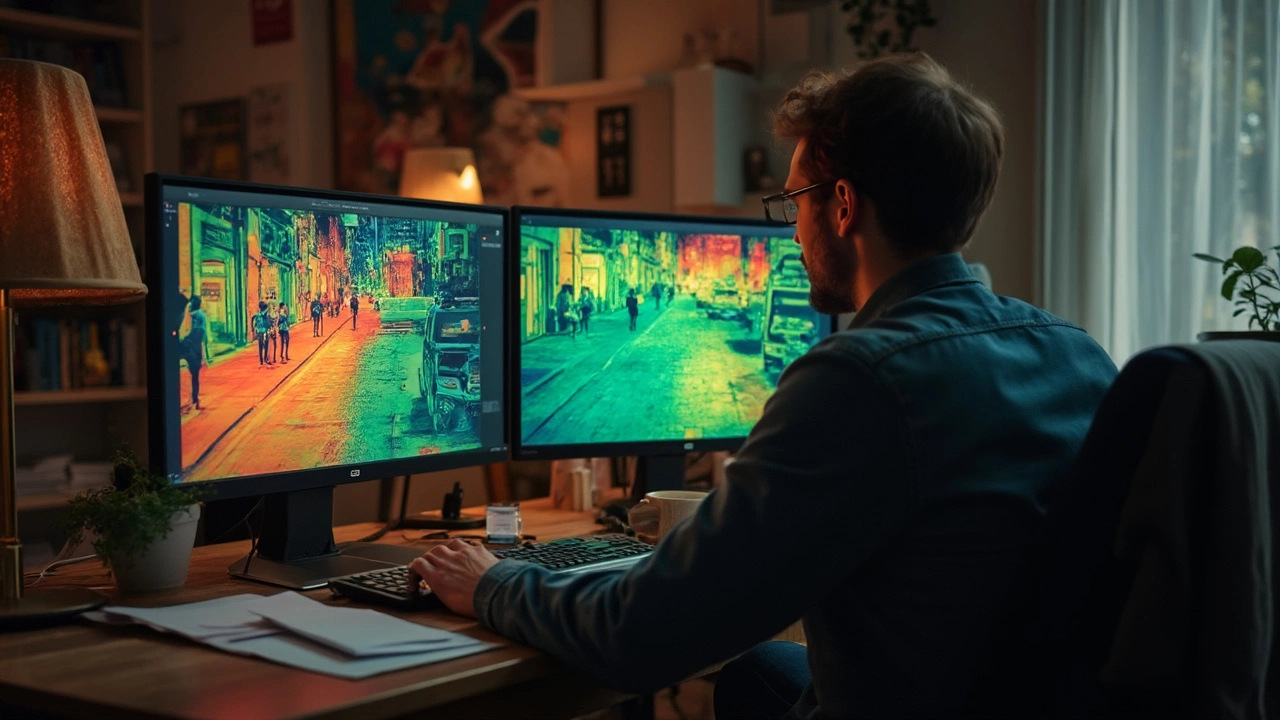
When to Use Each Camera
Choosing between an infrared camera and a night vision camera isn’t just splitting hairs. Each has its sweet spot depending on what you’re trying to see in the dark.
If you’re dealing with complete darkness—like a backyard with zero streetlights or a cabin in the woods—infrared cameras step up. They create their own invisible light (infrared LEDs) that bounce off objects, letting you see things even when there’s absolutely no visible light. This makes them the go-to for home security systems and wildlife monitoring at night. And here’s the kicker: most infrared cameras can catch movement that regular cameras flat-out miss after sunset.
Flip over to night vision cameras. These work best when there’s at least a little ambient light—think moonlight or a distant streetlamp. They take whatever light is available and make it much brighter, so you see more than with your naked eye. That makes night vision cameras useful for things like night-time hiking, boating, or anywhere there’s some light to work with, but not quite enough.
- Home security: Go with infrared, especially for outdoor spots that get pitch black.
- Watching wildlife: Infrared lets you see animals without scaring them off with a flash.
- Driving at night: Night vision cameras help you see hazards on the road by boosting headlight glare.
- Nighttime adventures: Hiking or camping? Night vision cameras won’t wash out your view with harsh lighting and still let you capture what’s happening around the fire or under the stars.
Here’s an easy side-by-side to help you decide:
| Situation | Better Choice |
|---|---|
| Zero light (e.g., pitch dark yard) | Infrared Camera |
| Some light (moonlit park or campsite) | Night Vision Camera |
| Need to go undetected (no visible glow) | Infrared Camera |
| Moving around at night (navigation, hiking) | Night Vision Camera |
Bottom line? If you want to cover all your bases, some folks mix both. Pair an infrared camera with a night vision camera for maximum coverage—especially if you aren’t sure how much light you’ll have.
Real-World Examples and Surprising Facts
Night vision gear isn’t just for spies or military folks. Turns out, infrared cameras and night vision cameras show up all over the place—sometimes in ways you wouldn’t expect.
Security companies have quietly relied on infrared cameras for years. Think about those security cams you see on houses and in parking lots. They pump out invisible IR (infrared) light, which is why you still show up on camera at 2 a.m. when the place is pitch black. Wildlife researchers also love IR because animals won’t spot the beam. Your home security camera probably uses this trick—if you see little red dots in the dark, that’s infrared working its magic.
On the other side, night vision cameras are a mainstay for police and search-and-rescue teams. Remember those viral chase clips where everything glows green? That’s classic night vision at work. It takes what tiny bit of light there is—like moonlight or streetlights—and turbo-charges it so you can see shapes moving around. Game wardens use this on night patrol, and some night vision goggles even save lives during blackouts or disasters.
Here’s a cool stat: One study found that over 60% of security systems installed in the U.S. since 2021 use both IR and night vision tech. Basically, the best setups blend both worlds.
| Situation | Which Camera Works Best |
|---|---|
| Wildlife watching at night | Infrared |
| Military or tactical use | Night vision |
| Home security in complete darkness | Infrared |
| Finding people during emergencies | Night vision |
One tip a lot of people don’t know: if you want to catch details like license plates or clothing at night, infrared cameras give a sharper black-and-white image, while night vision images can look fuzzier or greenish. Also, infrared means you can record without announcing you’re watching; animals and people won’t notice a thing. Night vision, though, needs at least a bit of light—totally dark rooms are a real challenge for it.
If you’re looking at off-the-shelf cameras, check if they use “IR LEDs”—that’s the giveaway you’re getting infrared. For night vision, look for anything with “image intensifier” or “low-light amplifier” in the specs. With this, you’ve got a serious edge picking the right camera for your next late-night mission.
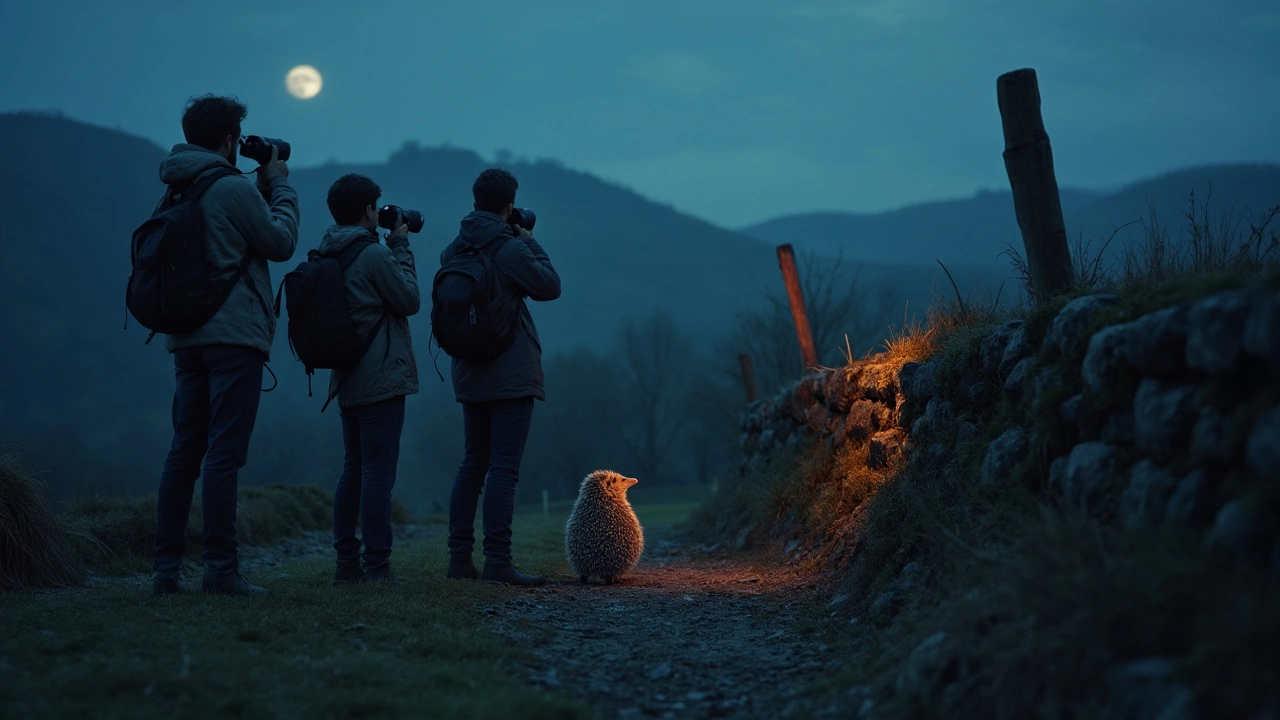
Tips for Choosing the Right Camera
When you’re staring at a bunch of camera boxes trying to make sense of specs, here’s what actually matters. Focus on what you need the infrared camera or night vision camera for—because they’re built for different jobs.
- Think about light levels. If you want to see in total darkness (like a pitch-black backyard), go for an infrared camera. It shines invisible IR light, so it records everything even when you can’t see your own hand. If your area has some light—like a streetlamp or moonlight—standard night vision cameras might do the trick.
- Consider what you want to see. Night vision gives you images with more detail and contrast, but most have the classic green or monochrome look. Infrared gives you clear shapes and movement, but colors might not show up at all. For security, seeing that someone’s there (even in total dark) with an IR camera might be more useful than knowing what color jacket they’re wearing.
- Know the range. IR cameras have a real limit—most consumer infrared cameras max out around 50 to 100 feet for crisp detail. Night vision cameras can stretch further if there’s some ambient light. Check the range listed on the box but don’t trust the marketing—user reviews matter here.
- Watch the battery life. IR can drain power fast if left running all night. Some night vision cameras use less power, especially digital ones. For camping or battery setups, double-check the specs or you might end up with a dead device just when you need it.
- Check for special features. Some cameras snap pictures; others record full video. If you need motion detection, WiFi, or face recognition, make sure those are built in. Most people only use half the features they pay for, so don’t get sold on extra bells and whistles unless you’ll truly use them.
Here’s a quick look at some basic differences side by side:
| Camera Type | Perfect for | Needs Light? | Usable Range |
|---|---|---|---|
| Infrared Camera | Total blackout, security | No | 50-100 feet (typical) |
| Night Vision Camera | Low light, wildlife | Yes (some) | 60-200 feet (depends on light) |
Last tip—pick your camera based on your main use, not on what sounds advanced. Getting a model that fits your actual needs beats having features you’ll never use or footage that doesn’t help you see what matters.

